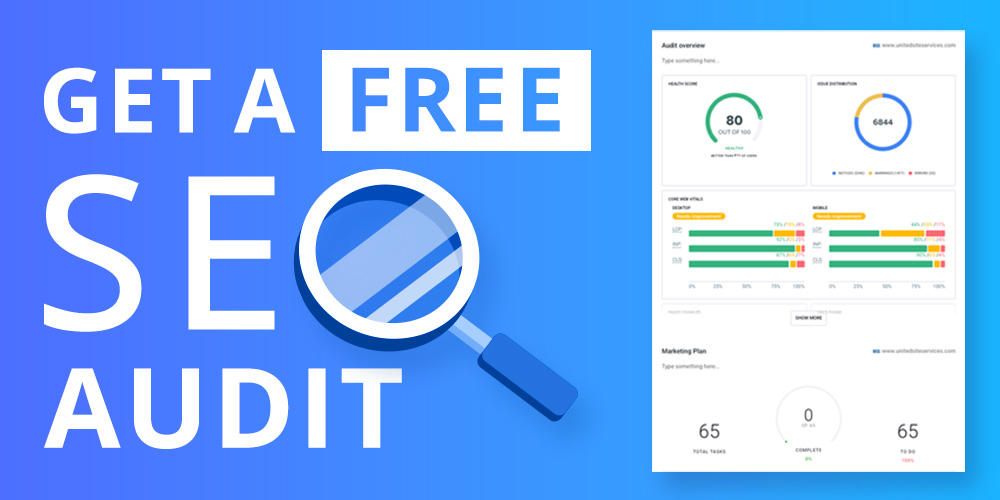


Shopifyストアの運営は刺激的で可能性に満ちていますが、経験豊富なセラーでさえ、成長を妨げるよくある落とし穴に陥ってしまうことがあります。モバイル最適化の怠慢から商品説明の不備まで、こうしたミスはビジネスの発展を阻害し、顧客を苛立たせる原因となります。
これらのミスを避けることで、時間を節約し、売上を伸ばし、忠実な顧客基盤を築くことができます。これらの問題を早期に特定し、解決することで、よりスムーズなショッピング体験を提供し、ストアの長期的な成功につながります。それでは、避けるべき主なミスを見ていきましょう。

Shopifyは成功するオンラインストアを立ち上げるための強力なツールを提供していますが、多くのオーナーは知らず知らずのうちに、成長を阻害する重大なミスを犯しています。モバイル最適化の見落としからブランディングの失敗まで、こうしたミスは顧客の信頼とコンバージョン率を損なう可能性があります。競争の激しい今日のeコマース業界で抜きん出るには、これらの問題を積極的に特定し、修正することが不可欠です。戦略的かつ細部にまで気を配ることで、パフォーマンスを向上させ、売上を伸ばし、ストアを長期にわたって円滑に運営することができます。
以下に、避けるべき主な間違いと、それを効果的に修正する方法を示します。
ターゲットオーディエンスを定義することは、Shopifyストアを成功させるための重要な第一歩です。誰に販売するのかが明確でなければ、マーケティングキャンペーン、メッセージ、商品の選択が適切なオーディエンスに響かず、リソースの無駄や成果の低下につながる可能性があります。
理想の顧客の人口統計、興味、購買行動を理解することで、戦略を効果的にカスタマイズできます。これにより、エンゲージメントの向上、コンバージョン率の向上、そして顧客ロイヤルティの強化につながります。
適切な市場調査をせずに製品を発売することは、売上が低迷したり、顧客ニーズと完全に乖離したりする最も早い方法の一つです。多くの店舗オーナーは、アイデアを検証することなく需要を推測し、時間、在庫、そしてマーケティング費用を無駄にしています。
徹底した市場調査は、あなたの商品が真のニーズに合致し、競合他社との差別化を図るのに役立ちます。また、価格設定、ブランディング、メッセージ戦略の策定にも役立ち、Shopifyストアの競争力と焦点をより明確にします。
ショップのデザインは、買い物客にとって第一印象となることが多く、第一印象は非常に重要です。雑然とした、時代遅れの、あるいは構造化されていないレイアウトは、訪問者が商品を閲覧する前にサイトを離脱してしまう原因となり、直帰率の上昇や販売機会の損失につながります。
すっきりとした視覚的に魅力的なデザインは、ユーザーの信頼を築き、滞在時間を延ばし、より多くのエンゲージメントを獲得するよう促します。ナビゲーションの容易さと一貫したブランディングを重視することで、訪問者をスムーズにストア内を案内し、全体的なショッピング体験を向上させ、コンバージョンの可能性を高めることができます。
ストアのテーマは、見た目の魅力と機能性の基盤となります。間違ったテーマを選ぶと、ユーザーエクスペリエンスの低下、カスタマイズオプションの制限、ブランドイメージを反映しないデザインにつながる可能性があります。多くのストアオーナーは、見た目を重視してテーマを選択し、ナビゲーション、表示速度、モバイル対応といった要素を軽視しがちです。
効果的なテーマとは、あらゆるデバイスで美しく表示され、優れたパフォーマンスを発揮するものでなければなりません。ストア独自のニーズとブランディングをサポートしながら、将来の変更にも柔軟に対応できるものでなければなりません。適切に選ばれたテーマは、エンゲージメントを向上させ、顧客との信頼関係を築くのに役立ちます。
ブランディングとは、単なるロゴではありません。お客様とあなたのお店との感情的なつながりです。明確で一貫性のあるブランディングを確立できないと、潜在的な購入者を混乱させ、信頼を失わせる可能性があります。強いアイデンティティがなければ、あなたのお店はプロフェッショナルではない、あるいは忘れられてしまう可能性があります。
効果的なブランディングは、認知度を高め、顧客ロイヤルティを促進します。ホームページからメールまで、あらゆるタッチポイントを通して、ストアの個性、価値観、そして約束を伝えることが重要です。一貫性のあるブランディングに投資することで、競合他社との差別化を図り、記憶に残るショッピング体験を生み出すことができます。
Shopifyアプリはストアの機能を大幅に強化しますが、インストールしすぎるとメリットよりもデメリットの方が大きくなります。過剰なアプリや統合が不十分なアプリは、サイト速度の低下、バグ、ユーザーエクスペリエンスの乱れにつながり、最終的には顧客の不満を招き、離脱につながる可能性があります。
インストールしたアプリを定期的に監査し、価値を提供し続けているかどうかを評価することが重要です。無駄を省き、適切に管理されたアプリ設定は、ストアの円滑な運営、パフォーマンスの向上、そして顧客満足度の向上につながります。
現在、オンラインショッピングをする人の半数以上が、モバイルデバイスで商品を閲覧し、購入しています。Shopifyストアがモバイル向けに最適化されていない場合、読み込み時間の遅さ、レイアウトの崩れ、操作の難しさなどでユーザーに不満を与え、最終的には売上の損失やエンゲージメントの低下につながる可能性があります。
モバイルフレンドリーなデザインはもはやオプションではなく、必須です。ストアがあらゆる画面サイズでスムーズに動作するようにすることで、ユーザーエクスペリエンスが向上し、 検索エンジンのランキング およびコンバージョン率。
ビジュアルコンテンツは顧客を引き付け、維持する上で重要な役割を果たしますが、画像が最適化されていないと、ストアのパフォーマンスに悪影響を与える可能性があります。画像ファイルのサイズが大きいとページの読み込み速度が遅くなり、ユーザーのストレスを増大させ、直帰率の増加につながります。
最適化された画像は、サイトの速度と検索エンジンの可視性を向上させます。これにより、サイトはスムーズに動作し、顧客体験を向上させる高品質なビジュアルを維持できます。また、代替テキストによる適切な最適化は、アクセシビリティとSEOにも役立ちます。
検索エンジン最適化(SEO) Shopifyストアをオンラインで見つけやすくするには、SEO対策が不可欠です。優れた商品であっても、しっかりとしたSEO戦略がなければ検索結果に表示されず、トラフィックと潜在的な売上が損なわれる可能性があります。多くのストアオーナーは、商品は自然に見つかるだろうと思い込み、この点を見落としています。
SEOのベストプラクティスを実践することで、可視性の向上、オーガニックトラフィックの促進、そして適切な顧客獲得につながります。商品ページ、コンテンツ、メタデータの最適化に重点を置き、サイトのランキングを高め、競争の激しい市場において際立った存在となるようにしましょう。
たとえ顧客が商品をカートに追加できたとしても、決済プロセスが複雑だったり長すぎたりすると、期待はたちまちフラストレーションに変わってしまいます。ステップ数が多すぎたり、アカウント作成が必要だったり、支払い方法が限られていたりすると、カート放棄の原因となり、コンバージョン率が低下します。
チェックアウトフローを簡素化することで、お客様は迷うことなく購入を完了しやすくなります。柔軟性を提供し、煩わしさを軽減し、プロセスを直感的にすることで、よりスムーズな体験を実現し、購入完了率を高めます。
大きな損失につながるミスを避けるには、まず積極的に情報収集することが重要です。ターゲット市場を理解し、ブランディングを洗練させ、ストアのデザインとパフォーマンスのあらゆる要素をテストする時間を取りましょう。サイトを公開するだけでは不十分です。データ、フィードバック、そして進化するeコマースのトレンドに基づいて、継続的に改善していくことが重要です。
ベストプラクティスを実践し、継続的に最適化することで、持続可能で収益性の高いShopifyストアを構築できる可能性が高まります。今日の思慮深いアプローチは、将来の大きな失敗を防ぐことに繋がります。
Shopifyストアを運営するには、商品を設定して売上を待つだけでは十分ではありません。成功の鍵は、綿密な計画、継続的な最適化、そして多くのストアオーナーが陥りがちな落とし穴を避けることです。SEOを無視したり、アプリを使いすぎたり、ターゲットオーディエンスを理解していなかったり、一つ一つのミスが成長と顧客満足度を阻害する可能性があります。
ストア管理に積極的なアプローチを取ることで、ビジネスの長期的な成功につながります。データに基づいた意思決定を行い、戦略を継続的にテスト・改善し、常に顧客体験を最優先に考えましょう。適切なマインドセットと実行力があれば、Shopifyストアは競争の激しいeコマース市場で成功することができます。
これらのよくあるミスを避けるには、時間、一貫性、そして専門知識が必要ですが、一人で行う必要はありません。Shopifyストアの管理と最適化のための専門家のサポートをお探しなら、 ブライトベッセルのShopify管理プラン 自信を持って成長するために必要なすべてを提供します。
テーマのカスタマイズやパフォーマンス調整からSEO、アプリの統合、継続的なサポートまで、Bright Vesselはお客様が常に時代の先を行くお手伝いをいたします。残りの部分は専門家が担当し、お客様のビジネスに集中していただけるよう、常に最高のパフォーマンスを発揮できる環境を整えています。

"*「必須項目」は必須項目です

"*「必須項目」は必須項目です

"*「必須項目」は必須項目です